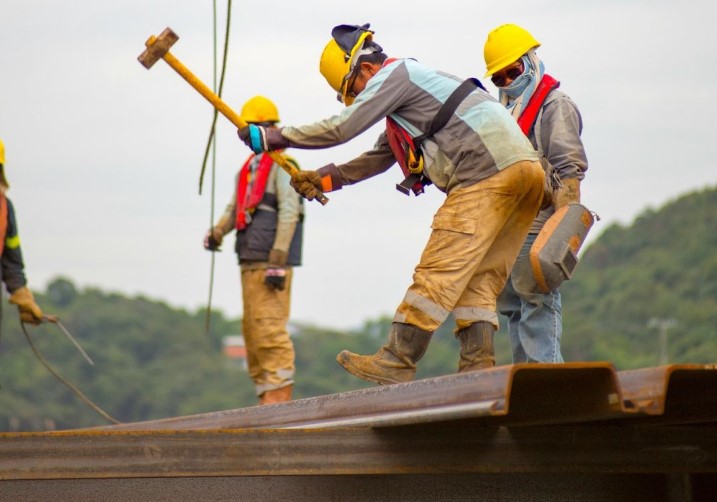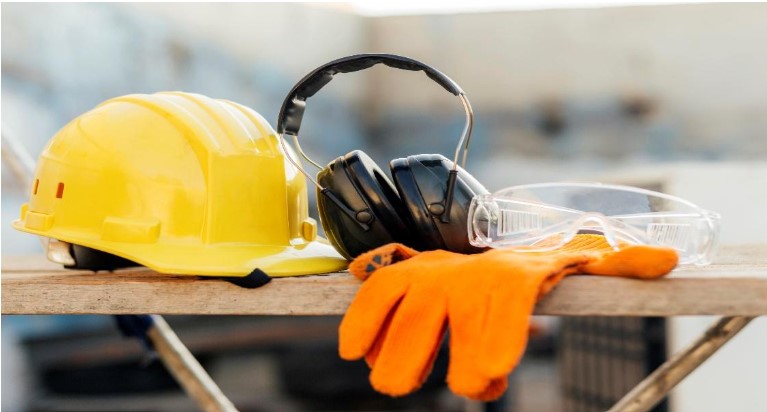Keywords: Lone working, lone worker safety, health and safety, HSE, risk assessment, workplace safety, lone worker protection, HSE training
Introduction
In today’s evolving work environment, the number of employees working alone commonly referred to as lone workers is on the rise. Whether it’s a security guard during a night shift, a cleaner after business hours, or an engineer performing maintenance in a remote facility, lone working presents unique health and safety (HSE) challenges that employers must address.

What is Lone Working?
Lone working refers to situations where an employee works without close or direct supervision. This can occur in a variety of sectors including construction, healthcare, security, and utilities. The key risk is that in the event of an emergency or incident, there is no one immediately available to assist the worker.
Why Lone Worker Safety is Important
Lone workers face increased risks such as:
- Slips, trips, and falls without immediate assistance
- Exposure to violence or aggression
- Medical emergencies going unnoticed
- Mental health strain due to isolation
How to Manage Lone Working Risks
- Conduct a Lone Working Risk Assessment
Identify tasks, locations, and hazards. Assess whether the work can be done safely alone. - Implement Safe Working Procedures
Provide clear guidelines for what to do in case of emergencies, equipment failure, or incidents. - Use Lone Worker Monitoring Systems
Utilize GPS tracking, panic buttons, and regular check-in systems to monitor safety in real time. - Training and Awareness
Regular HSE training ensures that lone workers are equipped with knowledge and confidence to manage risks. - Emergency Preparedness
Workers must know how to contact emergency services and what steps to take in critical situations.
Employer’s Legal Duties
In many countries, including under OSHA, UK’s Health and Safety at Work Act, and other national regulations, employers are legally required to ensure the health, safety, and welfare of their employees, including those working alone.
Failing to protect lone workers can lead to serious consequences both legal and moral...
Blog 2: Top 7 Best Practices for Lone Working Health and Safety
Keywords: lone working health and safety, lone worker policy, safety best practices, workplace hazards, lone worker training, HSE compliance

Introduction
Whether in construction, maintenance, retail, or healthcare, lone workers play a crucial role in business operations. However, their isolation puts them at greater risk than their team-based counterparts. To uphold high health and safety standards, employers must adopt best practices for lone working.
Here are the top 7 best practices every organization should implement.
- Develop a Robust Lone Worker Policy
Establish a clear lone working policy outlining procedures, responsibilities, risk controls, and emergency actions. This sets expectations and demonstrates your commitment to HSE compliance.
- Identify and Assess All Lone Working Roles
A thorough risk assessment is essential. Identify:
- Who works alone?
- Where and when do they work?
- What hazards are present?
- What controls are needed?
Update the assessment regularly, especially after any incidents.
- Ensure Effective Communication Systems
Lone workers must be able to call for help at any time. Equip them with:
- Mobile phones or radios
- Check-in systems (e.g. calls before and after shifts)
- GPS-based lone worker apps with panic button
- Provide Comprehensive Lone Worker Training
All lone workers should receive **training on:
- Identifying hazards
- Managing aggression or threats
- Using personal safety devices
- Emergency protocols
- Monitor Mental Health and Wellbeing
Isolation can affect mental health. Create a supportive environment by:
- Encouraging regular contact
- Offering mental health resources
- Promoting work-life balance
- Perform Regular Lone Working Audits
Track how lone working procedures are followed and whether further improvements are needed. Use incident logs and worker feedback to enhance your systems.
- Test and Drill Emergency Responses
Simulate emergencies to evaluate the effectiveness of your lone worker protocols. This prepares employees and reveals any weaknesses in your response strategy.
Conclusion
Lone working is not inherently unsafe, but without the right safety culture and controls, the consequences can be severe. Protecting lone workers is not only a legal requirement, but a moral one too.
Blog 3: Legal Responsibilities and Regulations Around Lone Working
Keywords: lone working legislation, HSE regulations, employer legal duties, lone worker compliance, workplace safety law, risk control, occupational safety
Introduction
As lone working becomes increasingly common across sectors, understanding the legal responsibilities associated with it is more important than ever. Employers who fail to meet their obligations risk not only the wellbeing of their employees but also significant legal and financial consequences.

What Do the Regulations Say?
In many countries, lone working is not illegal, but it must be properly risk-assessed and managed. Key regulatory frameworks include:
- ILO Convention No. 155 and Recommendation No. 164 (Occupational Safety and Health)
- UK’s Health and Safety at Work Act 1974
- U.S. OSHA General Duty Clause (Section 5(a)(1))
- EU Framework Directive 89/391/EEC on Safety and Health at Work
These regulations emphasize that employers are responsible for safeguarding all employees, including those working alone.
Employer’s Legal Responsibilities
To comply with HSE regulations, employers must:
- Conduct Thorough Risk Assessments
- Evaluate hazards specific to lone work.
- Identify who may be harmed and how.
- Implement Control Measures
- Provide training, emergency plans, and communication devices.
- Remove or reduce risks to acceptable levels.
- Monitor and Review Lone Work Activities
- Continuously assess safety performance and adapt policies accordingly.
- Provide Welfare Support
- Ensure lone workers have access to sanitary facilities, rest areas, and first aid.
- Document Procedures and Training
- Maintain up-to-date records of assessments, safety procedures, and refresher training sessions.
Consequences of Non-Compliance
Non-compliance can result in:
- Legal action or prosecution
- Hefty fines and compensation claims
- Reputational damage
- Decreased employee morale and productivity
Best Practices for Compliance
- Use lone worker management software with real-time alerts
- Keep safety policies aligned with national and international guidelines
- Engage certified HSE professionals or consultants for training and audits
Conclusion
Understanding and adhering to lone working legislation is a critical component of occupational safety. By embedding legal compliance into your safety culture, you protect your workers and your organization.
Blog 4: Real-Life Lone Working Incidents Lessons Learned
Keywords: lone working incidents, HSE case studies, lone worker safety failures, workplace accidents, safety culture, incident prevention, lessons learned
Introduction
Behind every regulation and safety policy are real incidents that demonstrate the risks of lone working. Understanding what went wrong in past events helps organizations prevent similar outcomes
Incident 1: Engineer Trapped in a Confined Space
Background: A water utility engineer entered a remote pumping station alone to carry out maintenance. A sudden collapse of a structure left him injured and unconscious.
What Went Wrong:
- No check-in or communication system in place.
- Confined space work was conducted without a permit.
Lessons Learned:
- Always enforce permit-to-work systems for high-risk activities.
- Implement mandatory lone worker monitoring tools.
- Ensure lone workers have emergency equipment and contact mechanisms.
Incident 2: Cleaner Assaulted During Late Shift
Background: A female cleaner working alone in a retail store at night was attacked during her shift. No panic button or supervision system was available.
What Went Wrong:
- Lack of risk assessment for evening shifts.
- No training on dealing with aggression or emergency response.
Lessons Learned:
- Conduct violence and harassment risk assessments.
- Provide panic alarms and lone worker apps.
- Offer training in conflict resolution and situational awareness.
Incident 3: Security Guard Dies of Medical Emergency Background: A night-shift security guard suffered a heart attack while patrolling a large industrial site. He was found hours later.
What Went Wrong:
- No regular check-in or emergency escalation procedure.
- No access to first aid or automated defibrillator.
Lessons Learned:
- Implement hourly check-in systems.
- Install first aid stations and train staff in basic life support.
- Provide health monitoring support for high-risk lone workers.

- Physical hazards (e.g., slips, machinery)
- Environmental risks (e.g., remote locations, confined spaces)
- Personal safety risks (e.g., aggression, health emergencies)
- Mental health concerns due to isolation
Step 3: Develop a Lone Worker Safety Policy
A formal Lone Worker Policy provides a framework for all staff to follow. It should include:
- Definition and examples of lone working
- Roles and responsibilities (managers, workers, supervisors)
- Communication protocols
- Emergency response procedures
- Training and monitoring systems
- Disciplinary procedures for non-compliance
Step 4: Establish Monitoring and Supervision Methods
Create a system for regular check-ins, such as:
- Scheduled phone or video calls
- Automated check-in apps
- Man-down detection alarms
- Real-time tracking dashboards for supervisors
Step 5: Create an Emergency Response Plan
Ensure lone workers know what to do in emergencies. Your plan should include:
- Step-by-step instructions for different scenarios
- Contact information of supervisors and emergency services
- Clearly defined escalation procedures
- Roles of colleagues in responding to alerts
Step 7: Monitor, Audit, and Improve
Safety programs must evolve. Collect data on:
- Incidents or near misses
- Feedback from lone workers
- Device/system failures
- Health and wellbeing indicators
Conduct regular audits and update your policy and procedures based on findings.

Conclusion
Implementing a lone worker safety program is not a one-time task it is a continuous commitment to health, safety, and wellbeing. With the right structure, tools, and training, organizations can significantly reduce risks and build a culture where no worker is truly alone.
Blog 6: Mental Health and Wellbeing in Lone Working Environments
Keywords: mental health, lone working, employee wellbeing, workplace isolation, stress management, HSE, lone worker support, psychological safety
Introduction
While physical safety is often the focus of lone worker protection, the mental health implications of working in isolation are equally significant. Employees who work alone whether remotely, in the field, or after hours face increased risks of stress, anxiety, and burnout.
The Psychological Impact of Lone Working
Lone working can lead to:
- Feelings of isolation due to lack of social interaction
- Increased stress from handling emergencies alone
- Reduced motivation and productivity
- Undetected mental health issues due to absence of peer observation
Over time, these factors can severely impact employee wellbeing and performance.

Signs of Poor Mental Health in Lone Workers
Managers should watch for:
- Sudden withdrawal from communication
- Decline in work quality
- Irritability or emotional changes
- Repeated lateness or absenteeism
Early detection and intervention are key to preserving psychological safety.
Strategies to Promote Wellbeing
- Regular Check-ins
Use scheduled calls or video chats to maintain human connection. - Mental Health Training
Equip lone workers and supervisors to recognize and manage stress. - Access to Support Services
Provide counselling or employee assistance programs (EAPs). - Encourage Work-Life Balance
Avoid excessive overtime or unrealistic deadlines. - Foster a Culture of Openness
Normalize conversations about mental health and offer safe reporting channels.
Conclusion
Mental health is a core component of a safe working environment. For lone workers, psychological safety must be built into HSE planning, just like physical safety. Proactive support, regular communication, and a compassionate management approach can make all the difference.

